“When the work takes over, then the artist is enabled to get out of the way, not to interfere. When the work takes over, then the artist listens.”
― Madeleine L’Engle

Going places
Communicating science is more than telling others about your thoughts, experiments, research and ideas.
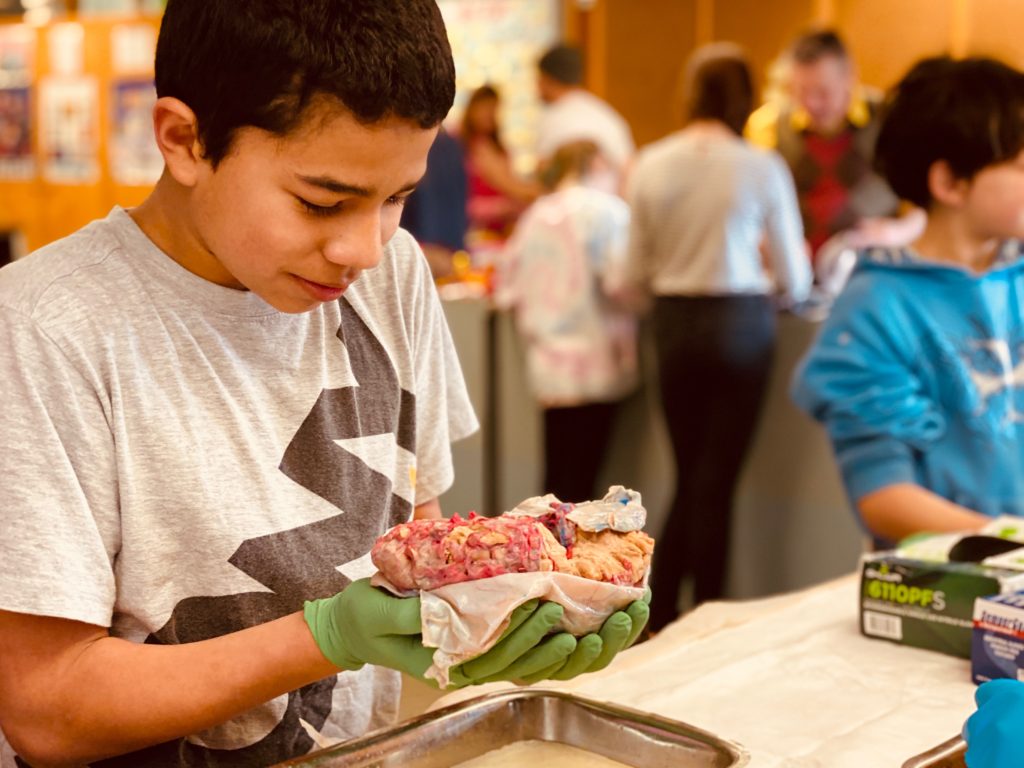
It’s more than bringing in ‘experts’ to educate people, or ‘set them straight,’ or tell them what they ‘need to know.’ It’s not about memorizing an ‘elevator pitch’ and then pressing play, regardless of where you are.

LEARN MORE: Synapsing in San Diego
LEARN MORE: Gaining trust as well as respect in communicating to motivated audiences about science topics
And it’s certainly not about asking cash-strapped aspiring science communicators to buy for-profit educational resources or attend (and pay for!) another expensive class or corporate “SciTalk” conference benefiting ‘professional’ faculty and administrators, many with minimal direct experience engaging non-scientists about research.

“Professionalization is about conformity”
― Leonard Cassuto
LEARN MORE: The Problem of Professionalization
LEARN MORE: It’s a mess: graduate schools are failing to prepare students for jobs
LEARN MORE: Qualitative Interviews With Science Communication Trainers About Communication Objectives and Goals
LEARN MORE: The professionalization of educators in science museums and centers
LEARN MORE: Teaching as a Profession
LEARN MORE: What are Open Educational Resources (OER)?
LEARN MORE: Scientists: Engage the Public!
Communicating science effectively means going places.
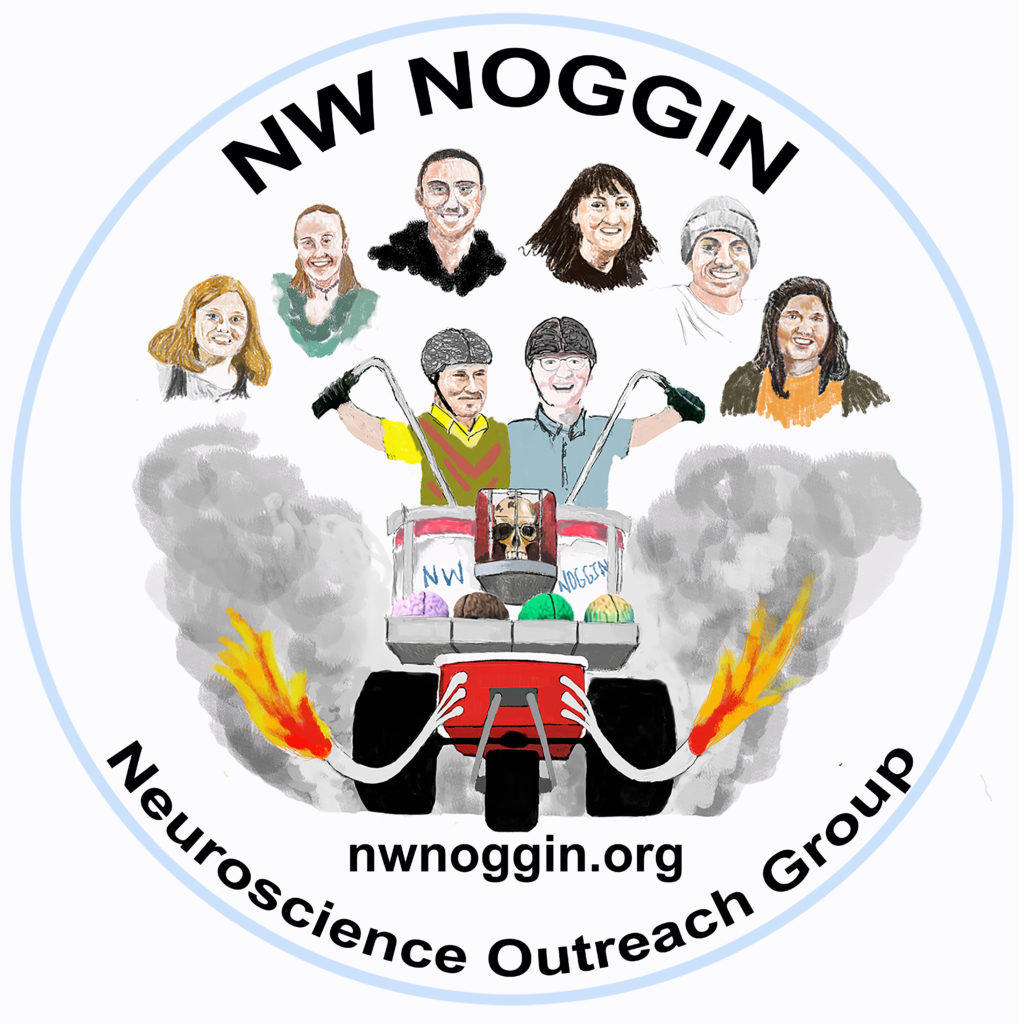
Image by Michael Endicott, Art Teacher @ North Middle School, Grants Pass
It means leaving your own comfort zone – the familiar lab, classroom, conference, your on campus “outreach” program (a.k.a., your institution’s “in-reach” marketing program), academic Twitter – to listen, and build relationships with other people.

LEARN MORE FROM TEACHERS: “Tomorrow is Brain Day!”
How does your own research on anxiety, say, or sleep, drugs, trauma, adolescent brain development, autism or ADHD relate to the lived experience of homeless youth at p:ear? What might you learn from women incarcerated at Coffee Creek? Or from K-12 public school students undergoing dramatic physiologic changes? Or people curious about science in cities – or rural Oregon? Or Congressional staffers on Capitol Hill?
LEARN MORE: Noggin @ p:ear
LEARN MORE: Brains & Change – Noggins @ Coffee Creek
LEARN MORE: Noggin Bloggin
LEARN MORE: OLD TOWN TALKS: Free Art & Science
LEARN MORE: Synaptic Community Connections
LEARN MORE: From classrooms to Congress
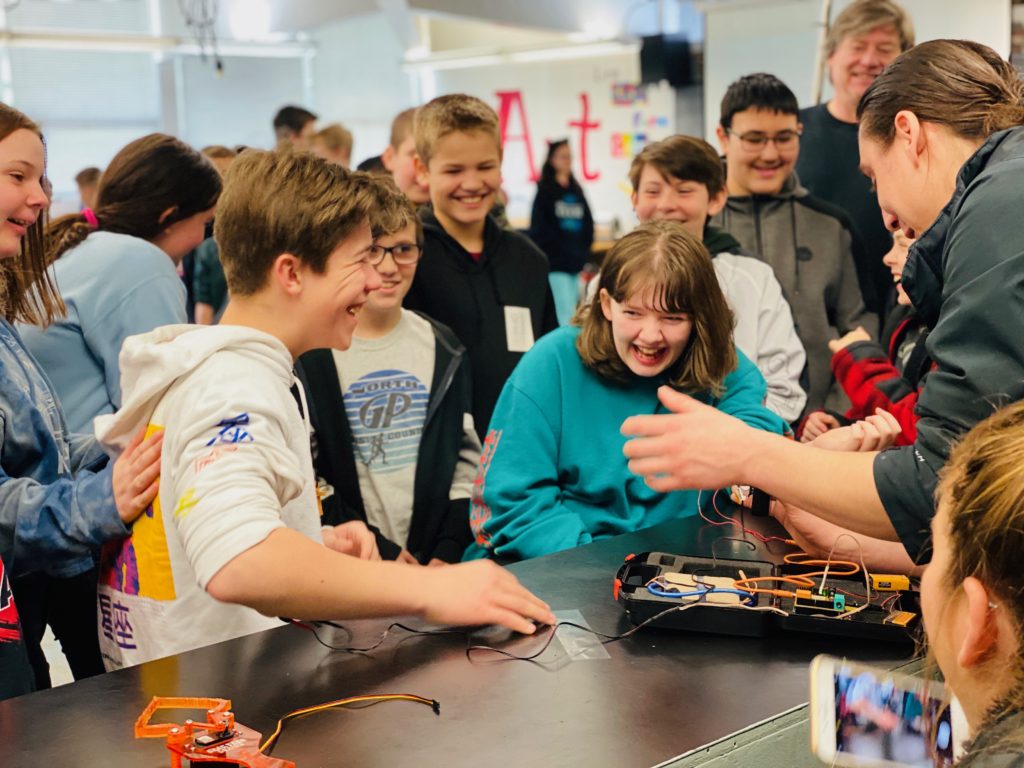
Or 6th graders in Grants Pass, Oregon!
Rogue River Return
NW Noggin was asked to return this year to North Middle School, thanks to Michael Endicott, the Art Teacher, and school students and staff. The North Middle School Parent Teacher Student Association (PTSA) provided both housing and meals for our Noggin volunteers!
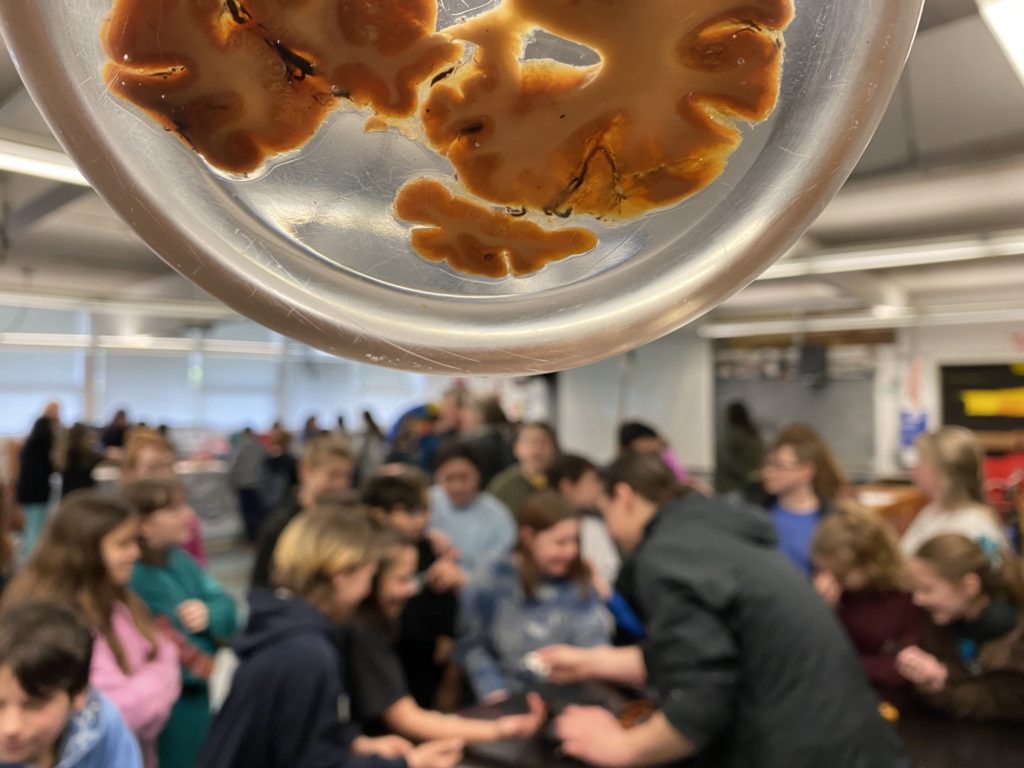
LEARN MORE: Gray Matter in Grants Pass!
We traveled 250 miles south of Portland to this mountainous Oregon Rogue River community for more art and brain engagement with 250+ kids!

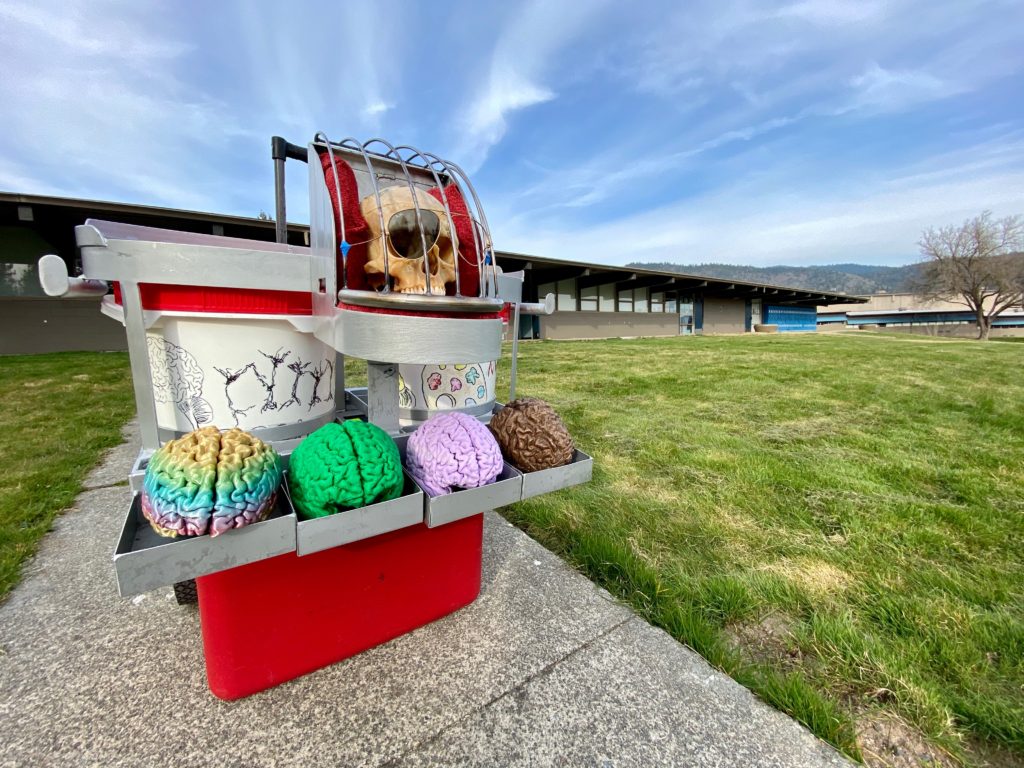
Jacob Schoen and Aaron Eisen joined us from the National University of Natural Medicine (NUNM) and Oregon Health & Science University (OHSU), along with Angela Hendrix from NW Noggin and Cam Howard, Michael Deveney and Lidia Echeverria-Garcia from Portland State (PSU).
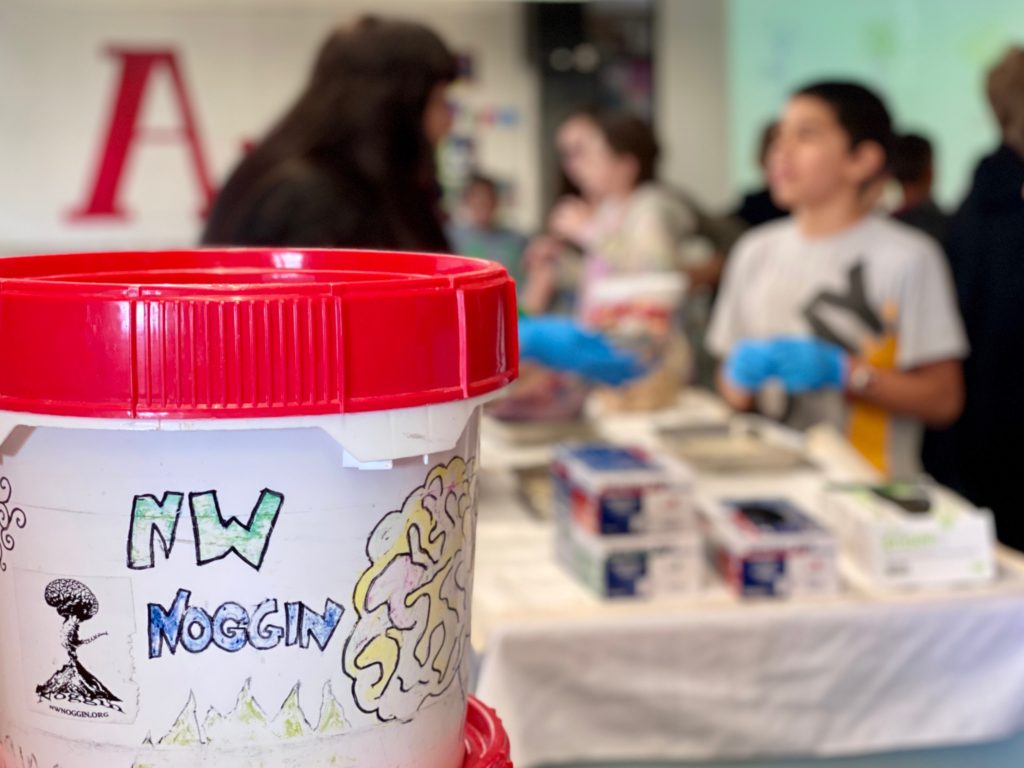
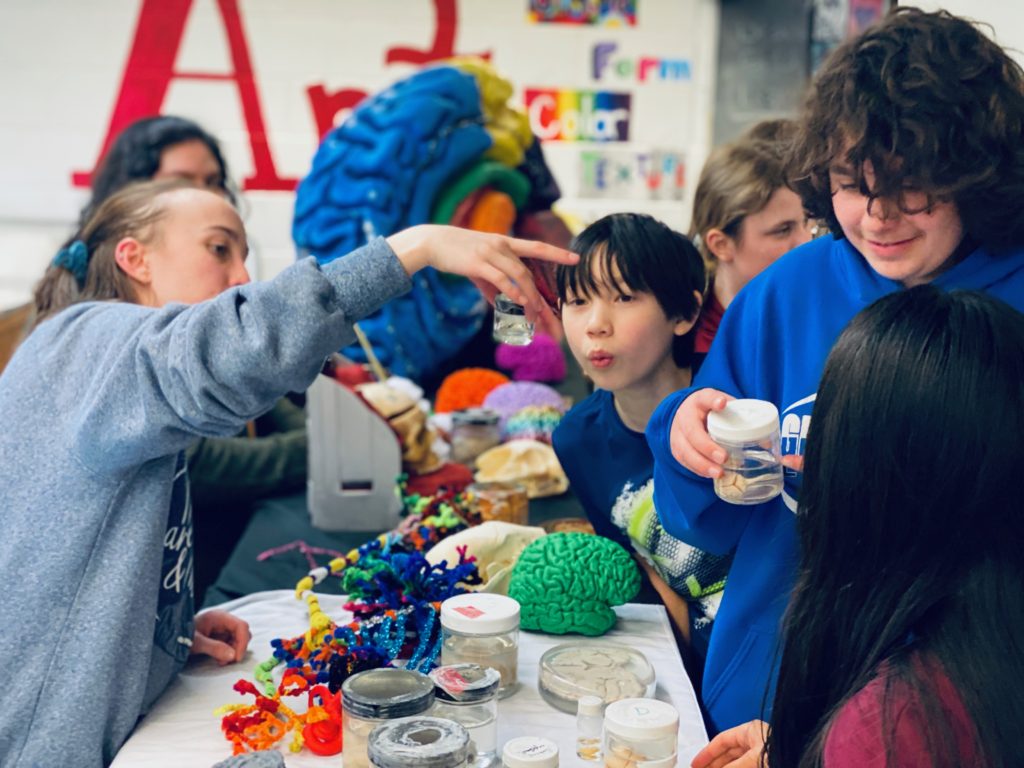
We spent the day examining brains…
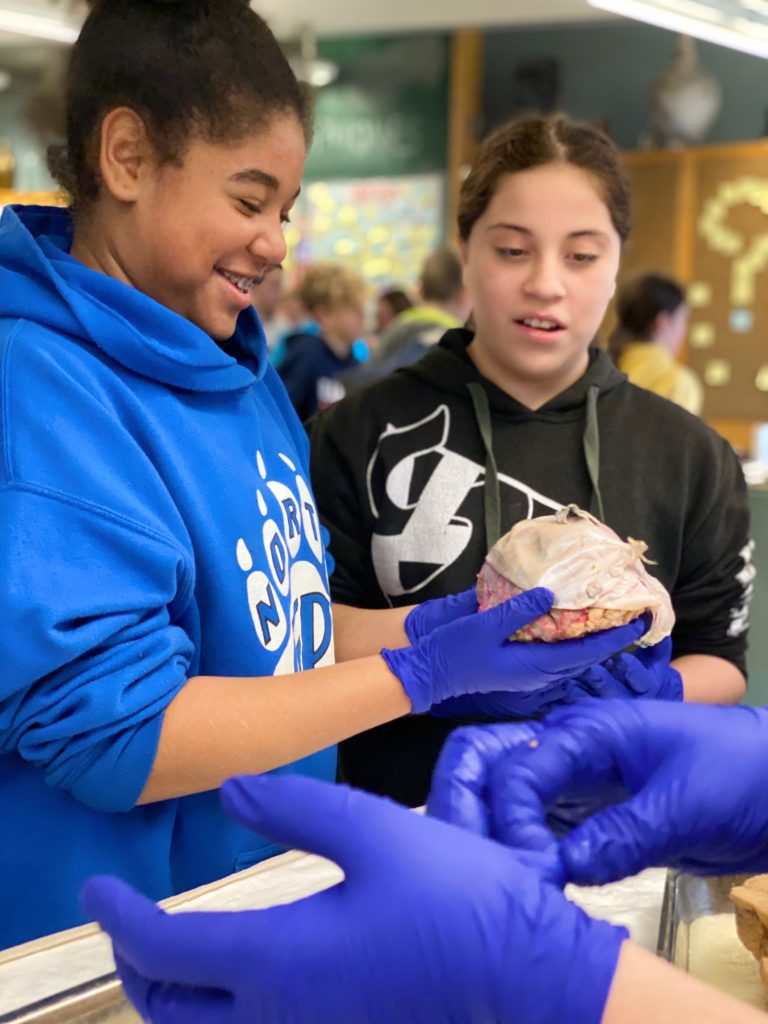


And making art…
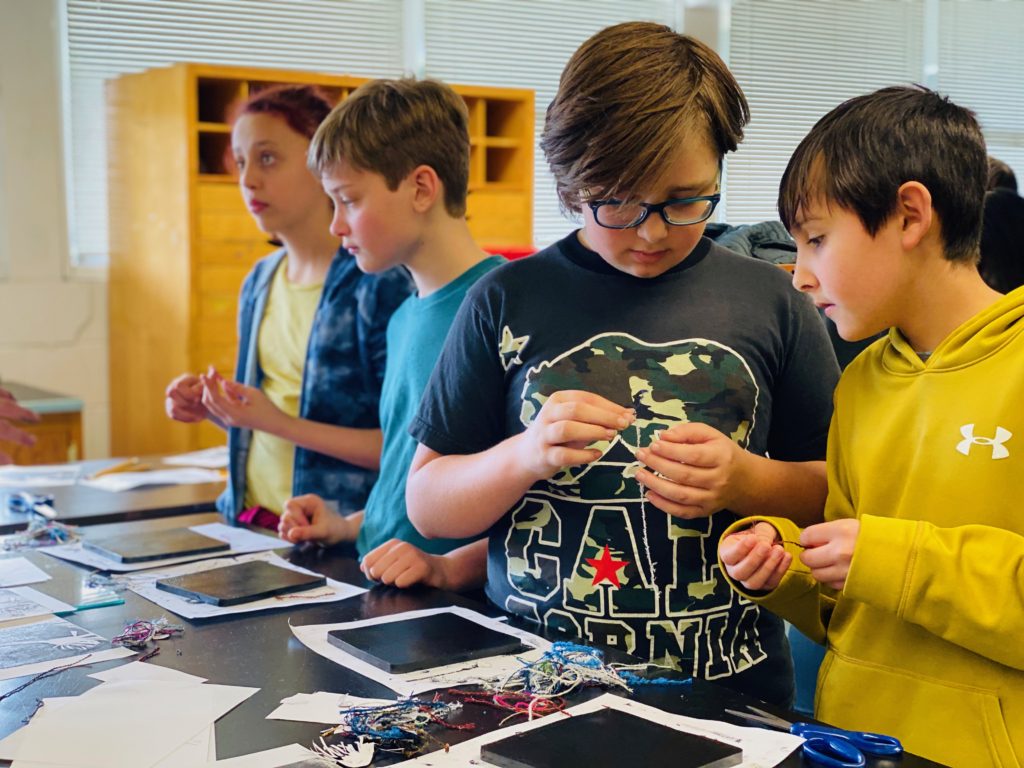
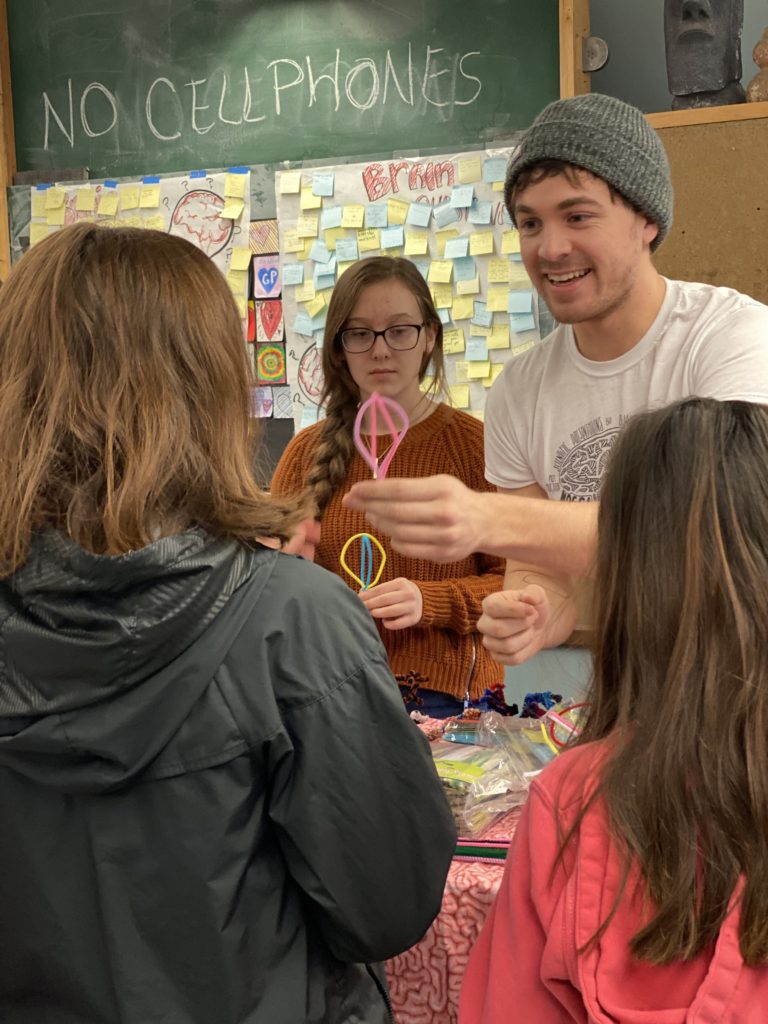

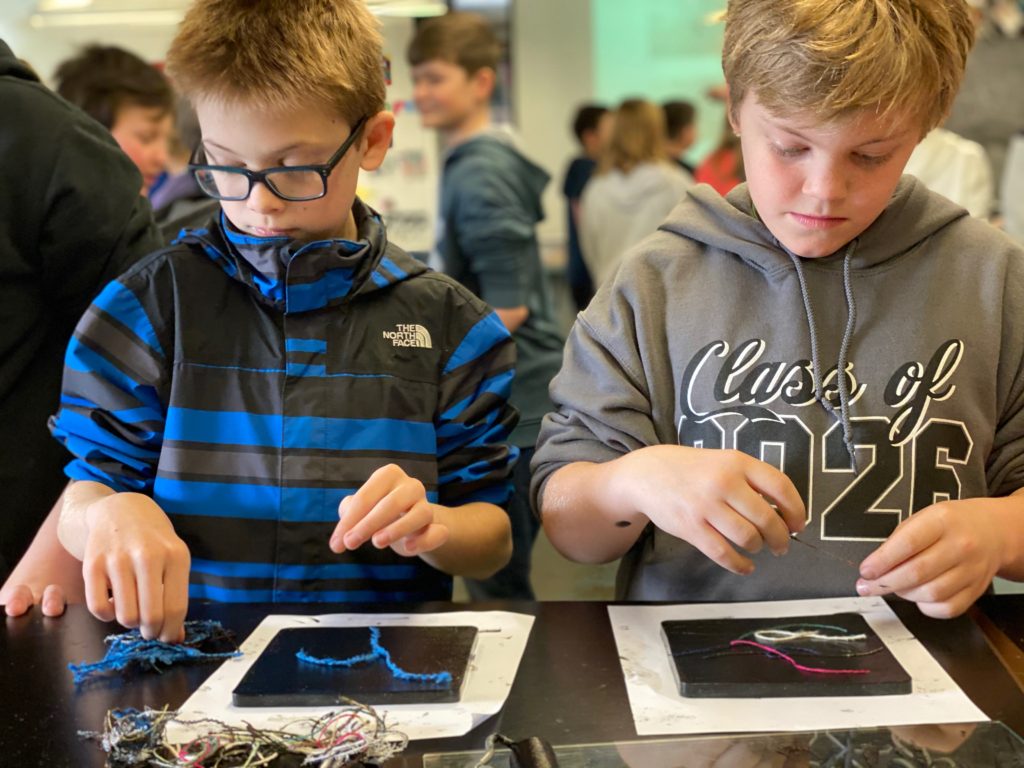
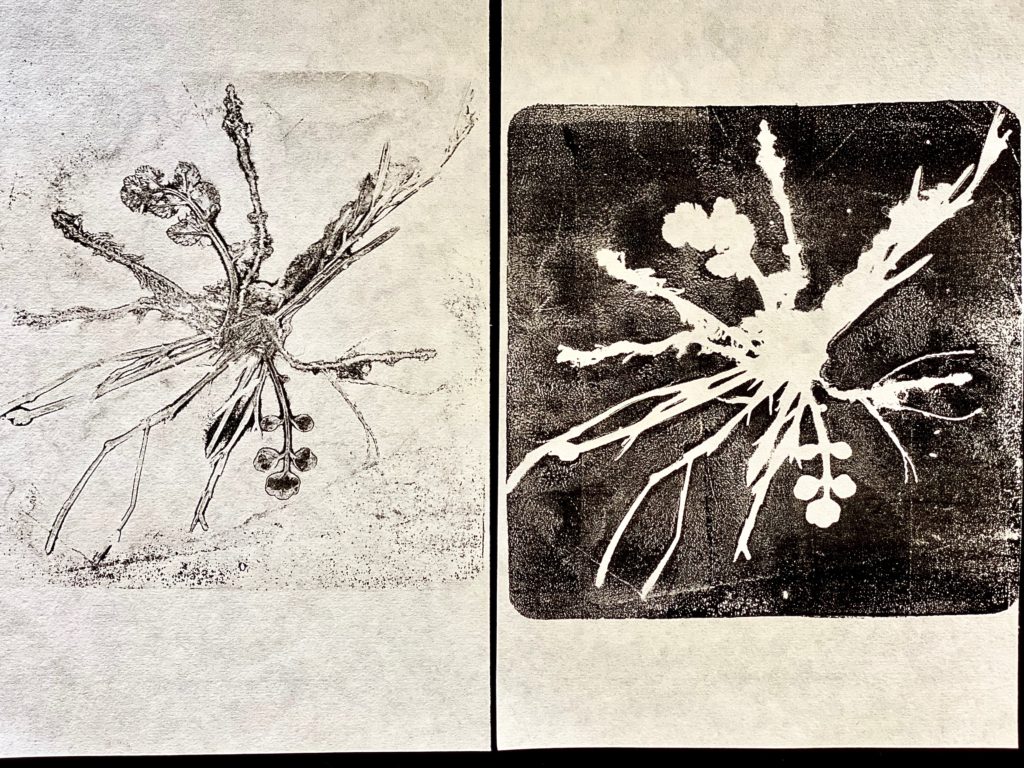
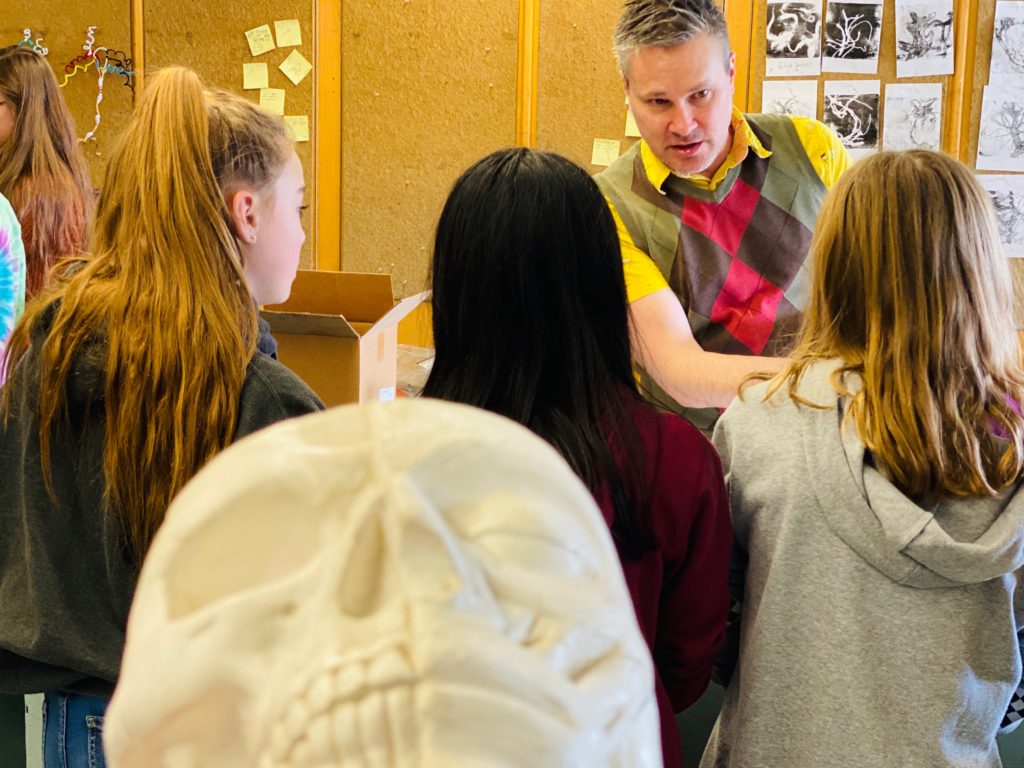
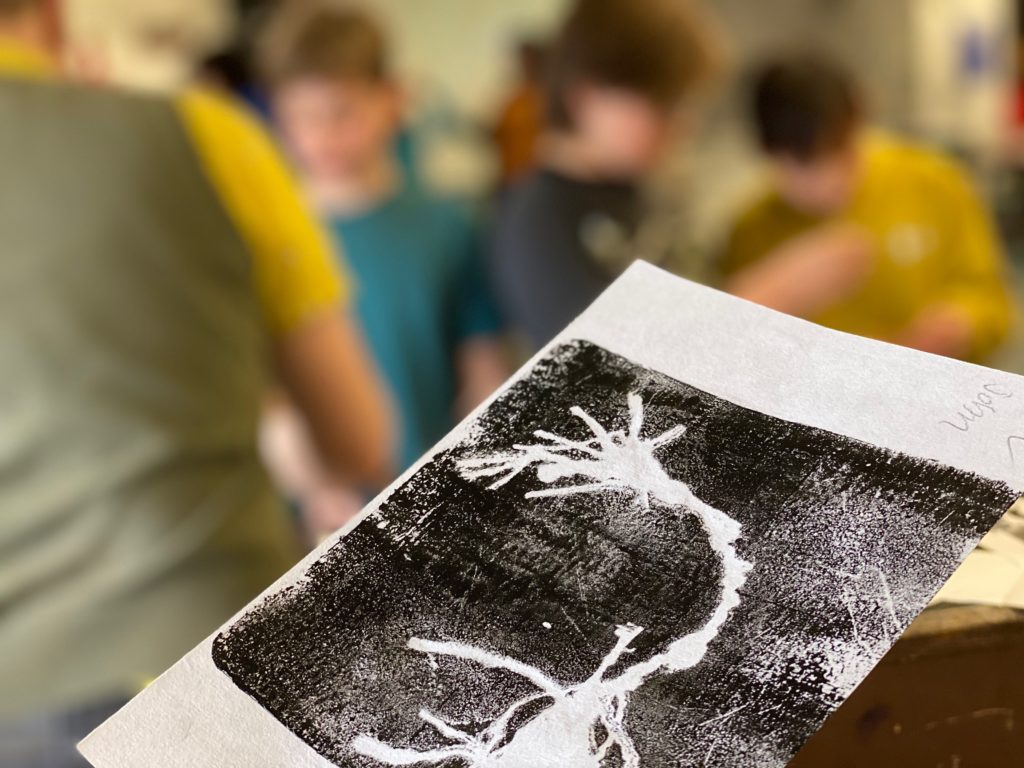
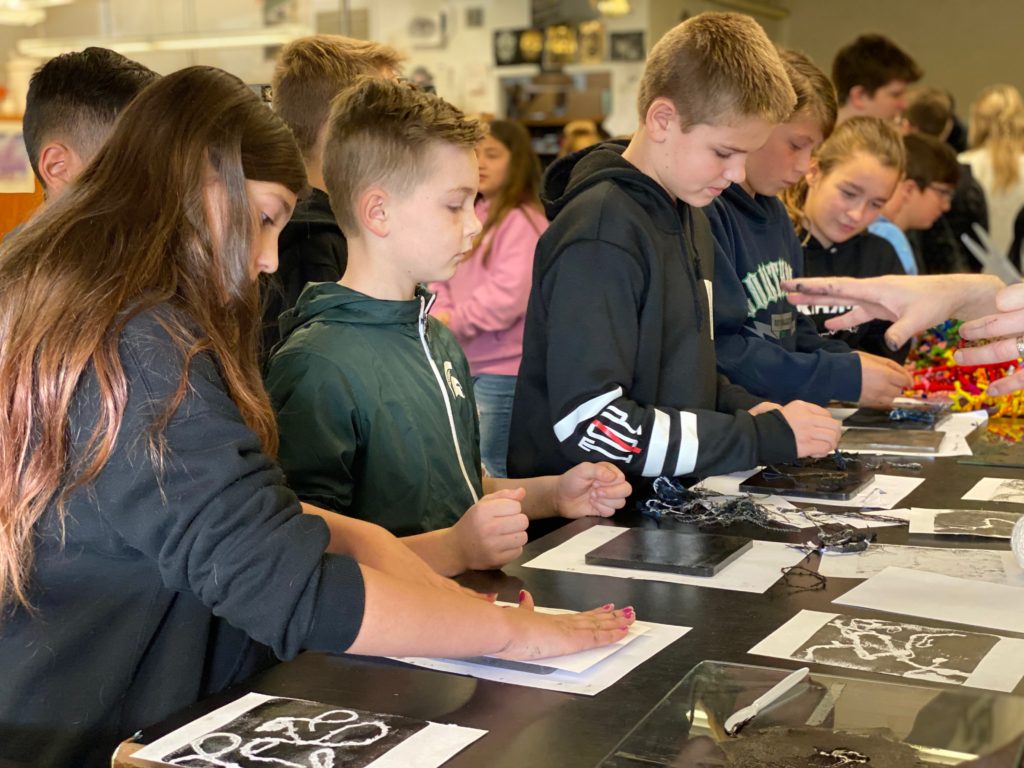
LEARN MORE: Why Art? Noggins go to Washington
LEARN MORE: How to Make a Pipe Cleaner Neuron
LEARN MORE: How to Make Brain Cell Gel Prints
LEARN MORE: Noggin STEAM Art Resources
And simulating the perceptual impairments from excessive alcohol using the “drunk goggles” from Fatal Vision…
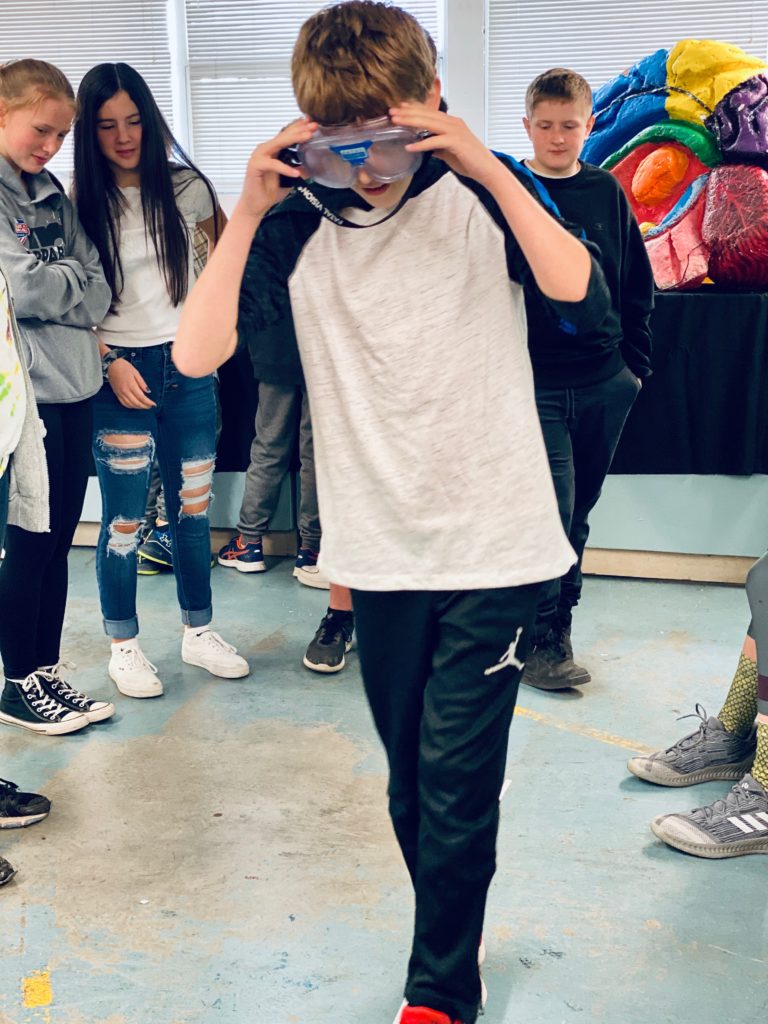
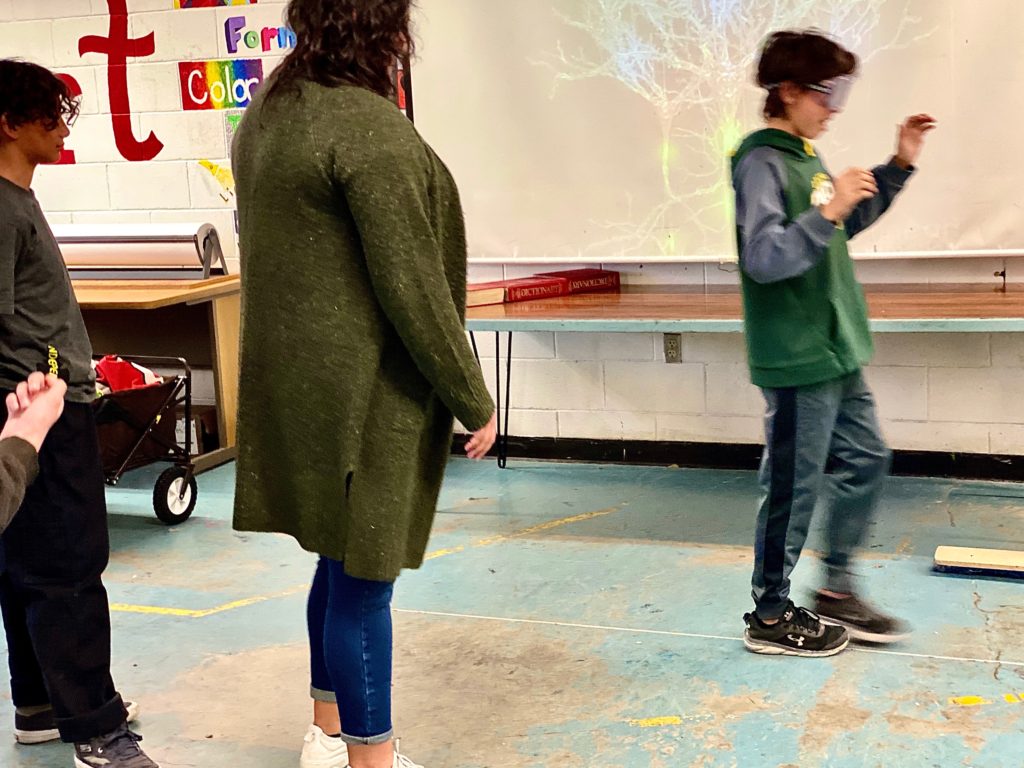
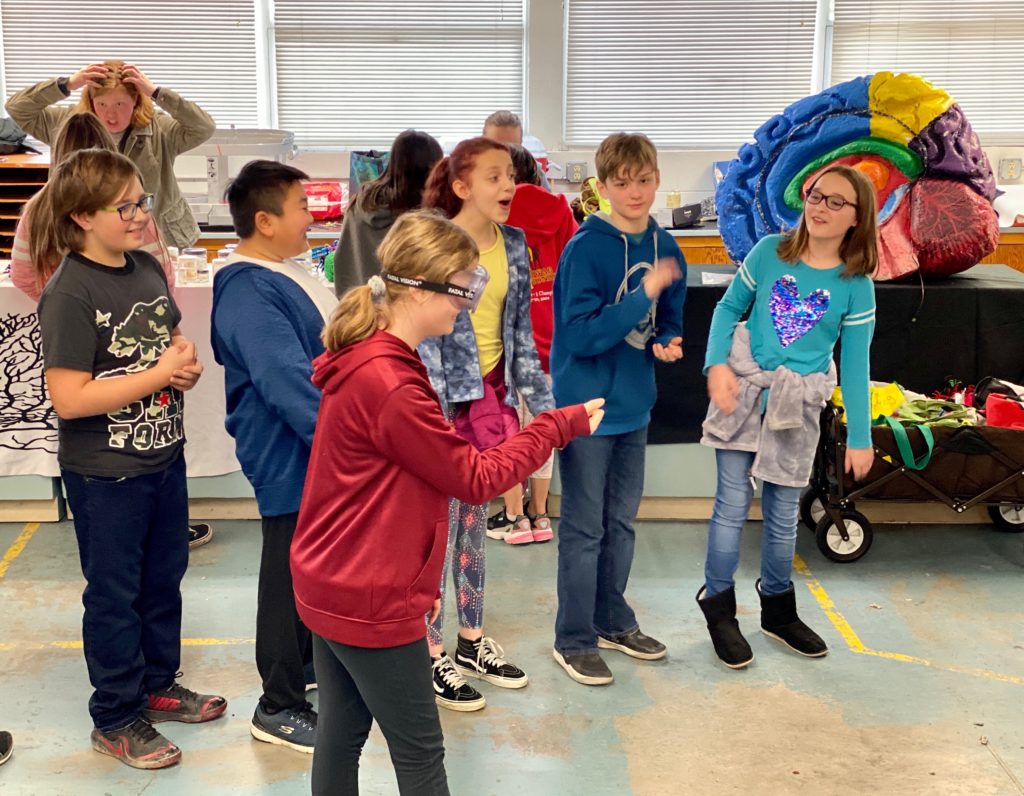
“There’s no way I’m getting in a car with someone who’s been drinking!”
― Student at North Middle School, Grants Pass, Oregon
LEARN MORE: Drunk Goggles Activities for your Alcohol Awareness Program
LEARN MORE: Alcohol Facts and Statistics
And learning firsthand about the electric nature of information flow in both neurons and muscle using the popular Human to Human Interface from Backyard Brains!
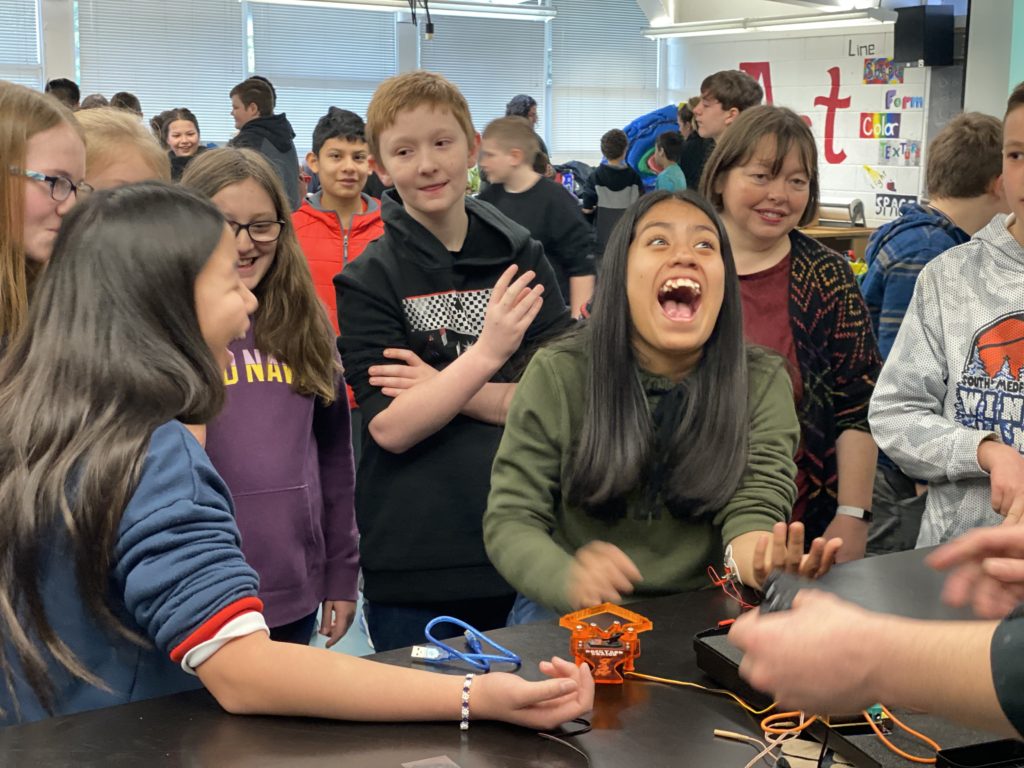
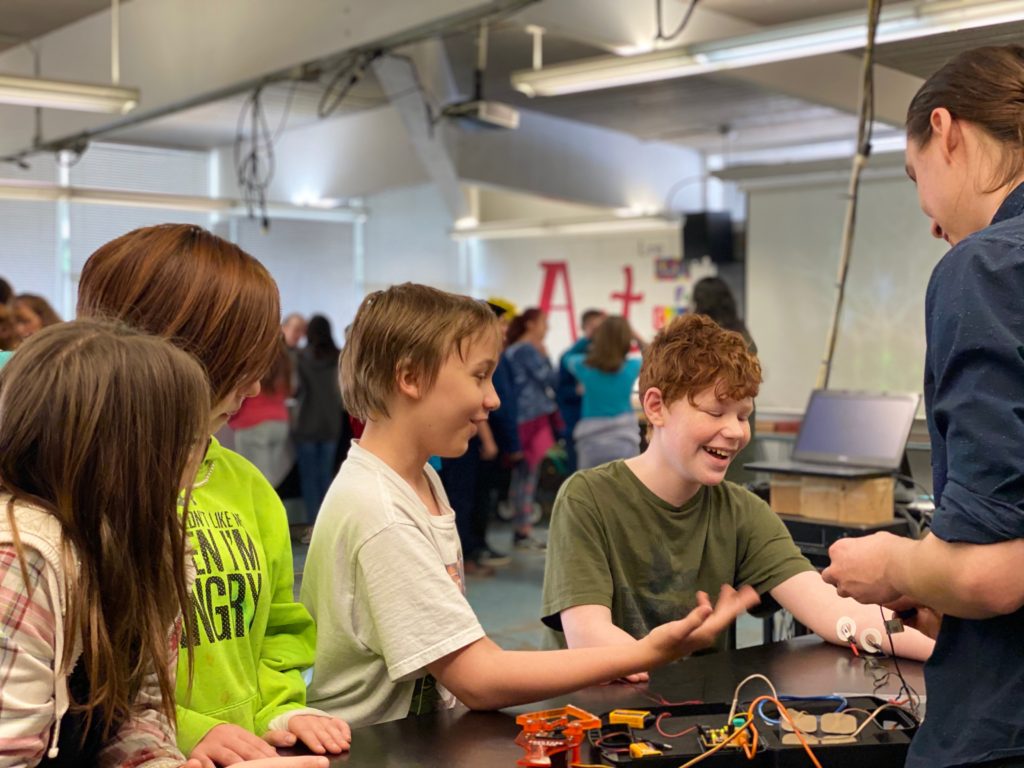
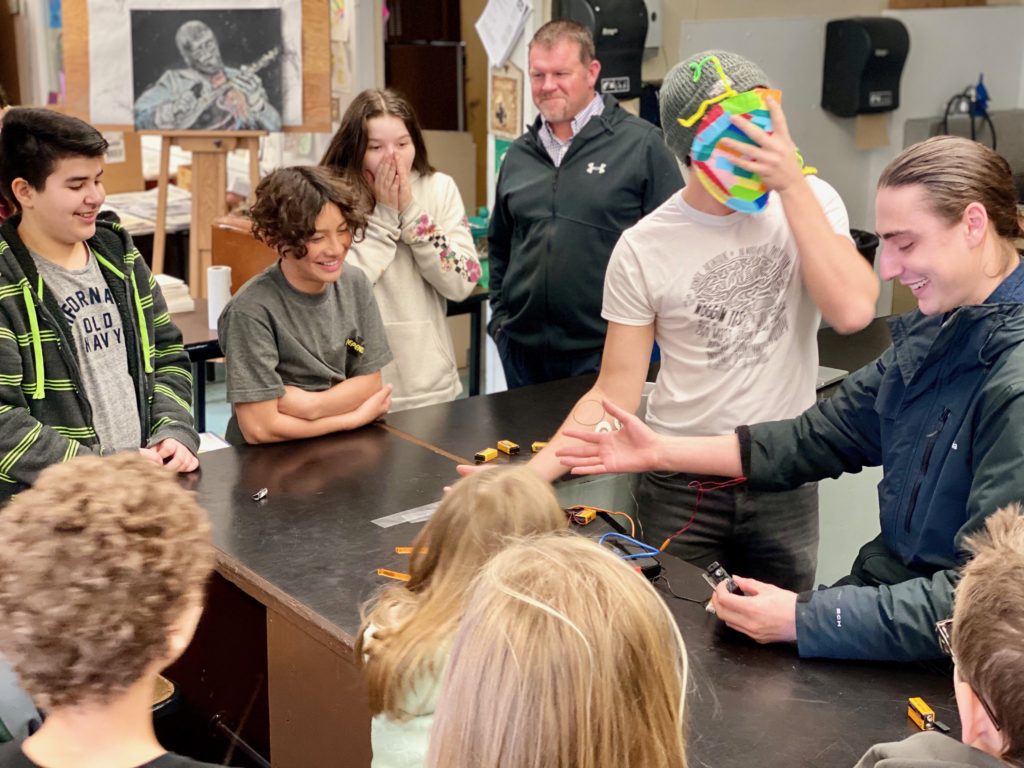
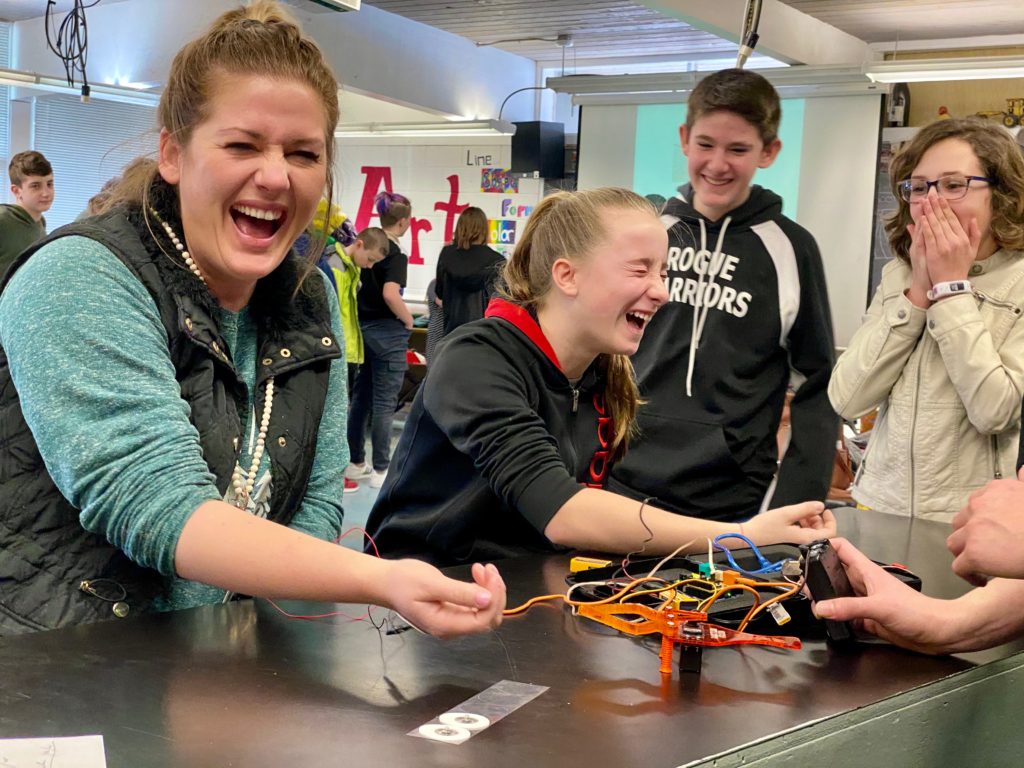
LEARN MORE: Brain Hacking is Electric!
Student Questions!
Though one of our favorite activities is reading the striking, insightful, deep, often funny, very unfiltered questions from 6th graders who are curious about neuroscience…
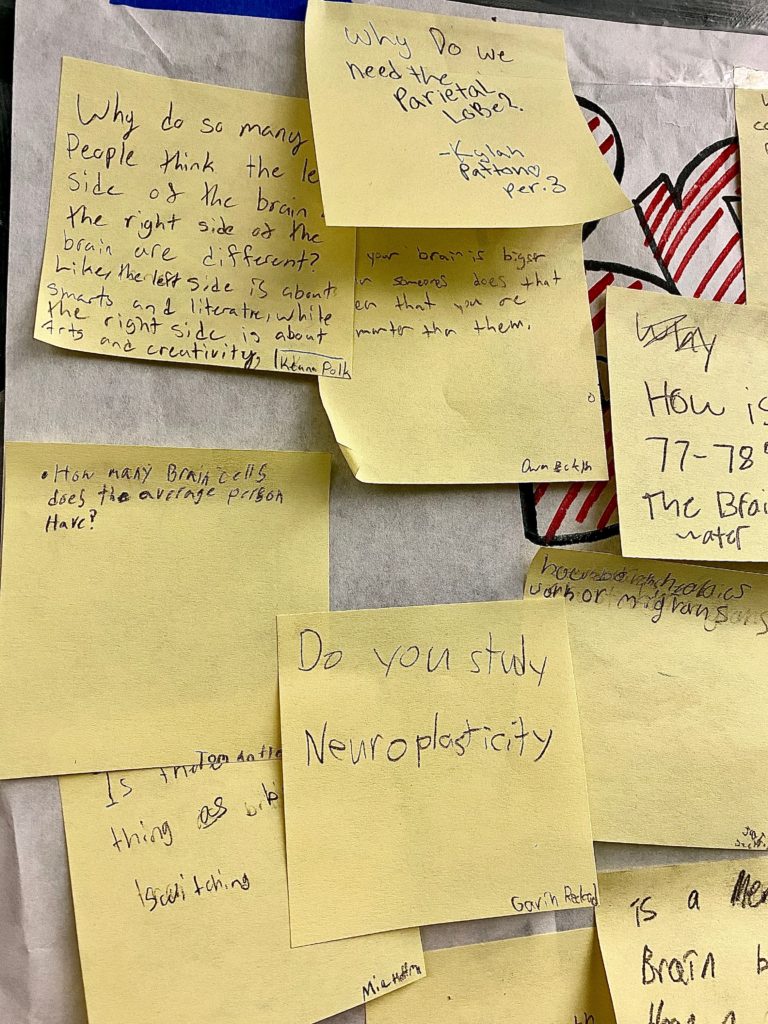
NW Noggin volunteer Cam Howard transcribed every single one (!), exactly as written. Our sincere thanks to Cam, and to all our extraordinary volunteers – and to the students, staff, teachers and PTSA at North Middle. Enjoy & cheers!
READ QUESTIONS FROM 2019: How can you change your brain?
“Why is the brain pink?”
“Why does the brain get smaller each year?”
“Why is there a gap between are brain”
“Why are there to sides of your brain. Why cant it Just be one Whole thing.”
“as you grow up dose your brain get bigger?”
“Why or how does The Brain Make you smart?”
“How do you perserve the brains.”
“are brains pink or a different color”

“Does listening to classical musical make you smarter?”
“Whos brains are bigger boy’s or girl’s? Thank you for coming”
“is there a Left brain or right brain Person?”
“How big is the brain?”
“my question is brains gives you energy”
“How large is the human brain?”
“How do our Brains wroks.”
“Does Music Make you smarter”
“Why is the Brain the shape it is”
“how many Parts of your Bren do you use for biking.”
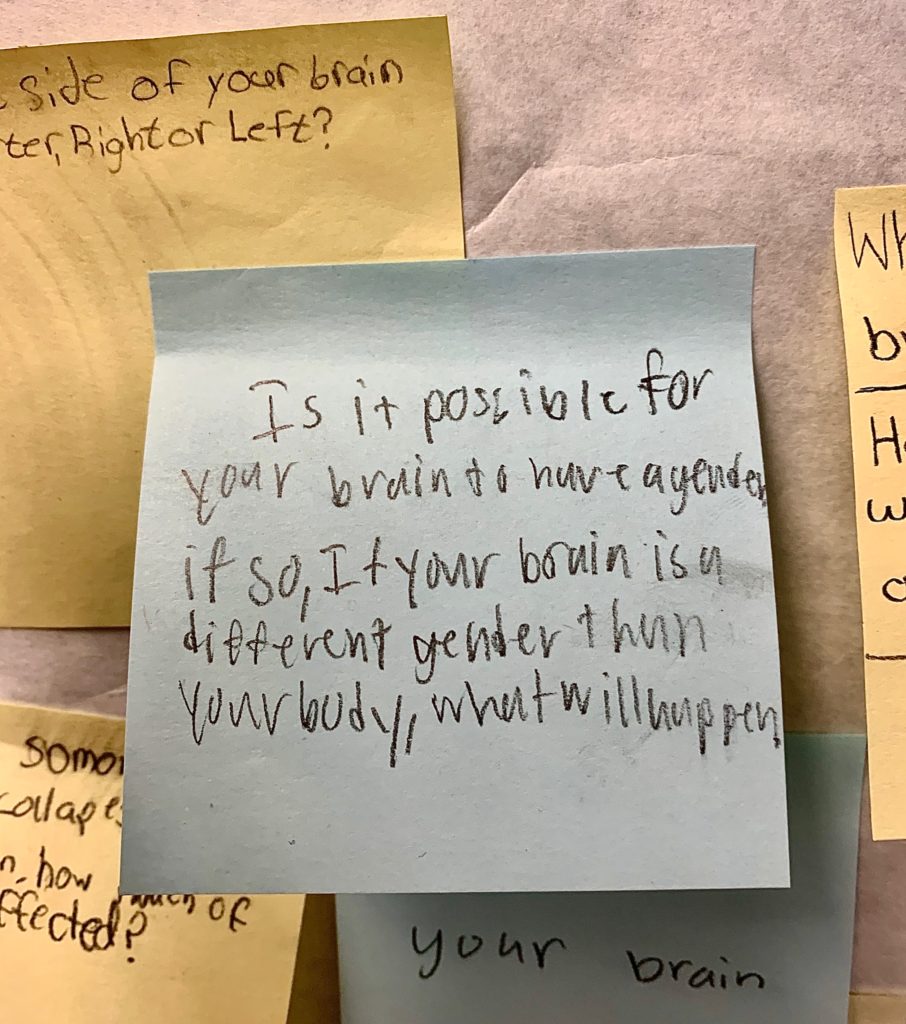
“Is it possible for your brain to have a gender; if so, if your brain is a different gender than your body, what will happen?”
LEARN MORE: Brains & Sex @ SfN
“Why are some people smarter than other people?”
“Wut do Brains do we we sleep”
“Why is the Brain shaped the way it is.”
“so if we combine the animal brain and human brain would they have the same number of cells?”
“What does our brain do while we sleep?”
“I can’t think of, anything… so how does the brain work? I guess.”
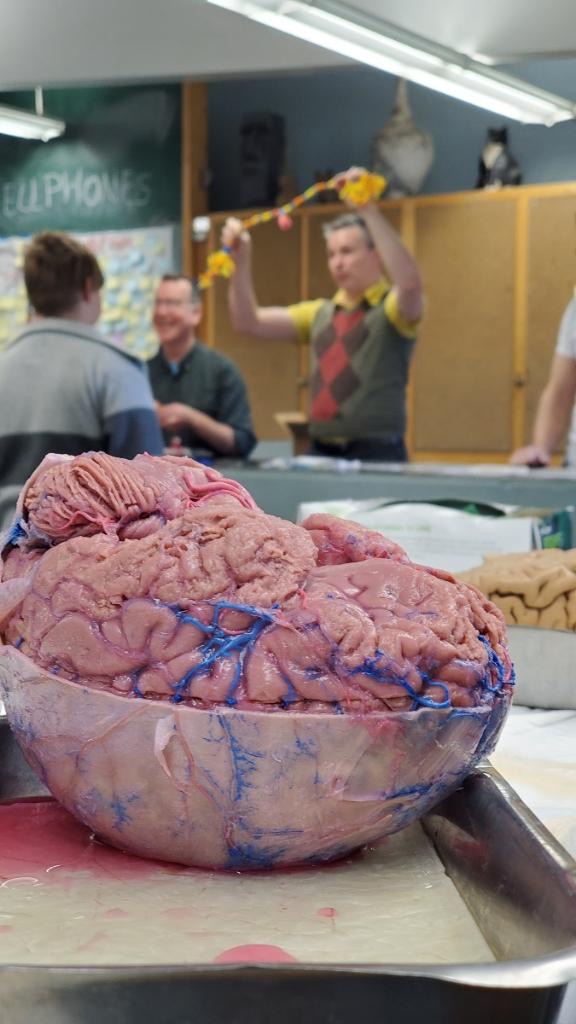
“If we all use all of are Brain how are someone smarter than someone else”
“What Happens if you Lose some of your brain from surgery?”
“Is the brain a muscle and if it is what type of muscle is it?”
“Why are some brains biger than ours”
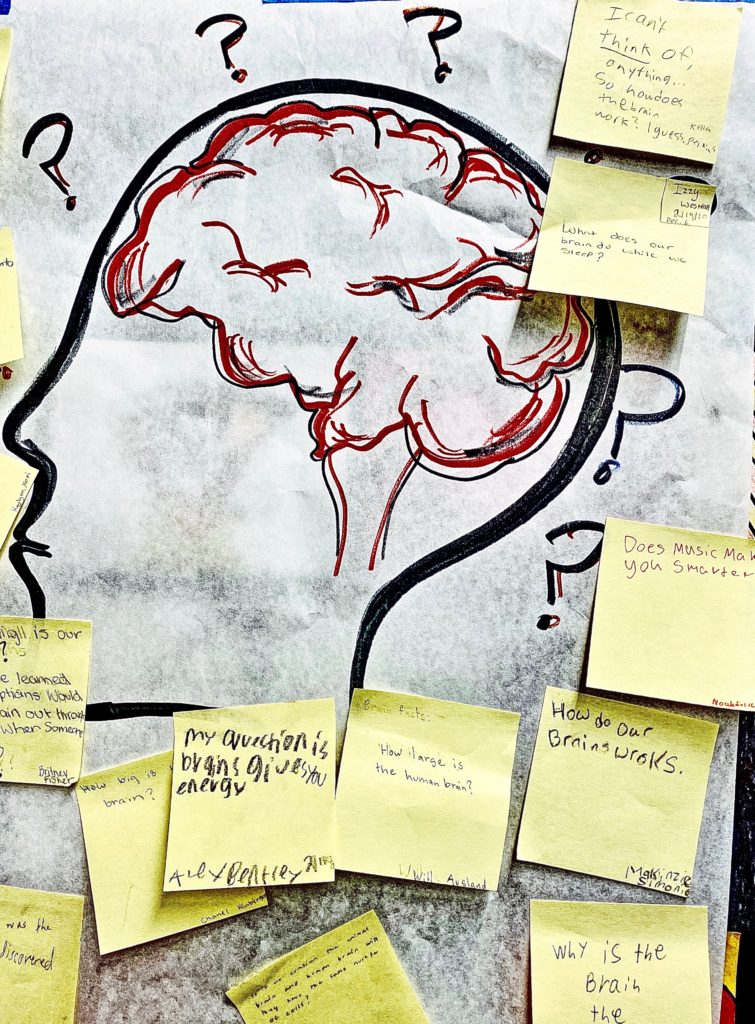
“are girls smarter or are boys are just playing dum?”
“What happens to our Brain when we get dizzy or light headed? Btw thank you again for letting us use the stethescopes!”
“How does your brain come up with your dreams?”
“what happens if u put a really smart persons Brain into a less inteligent persons Brain”
“Could you only have ¼ of your brain and live?”
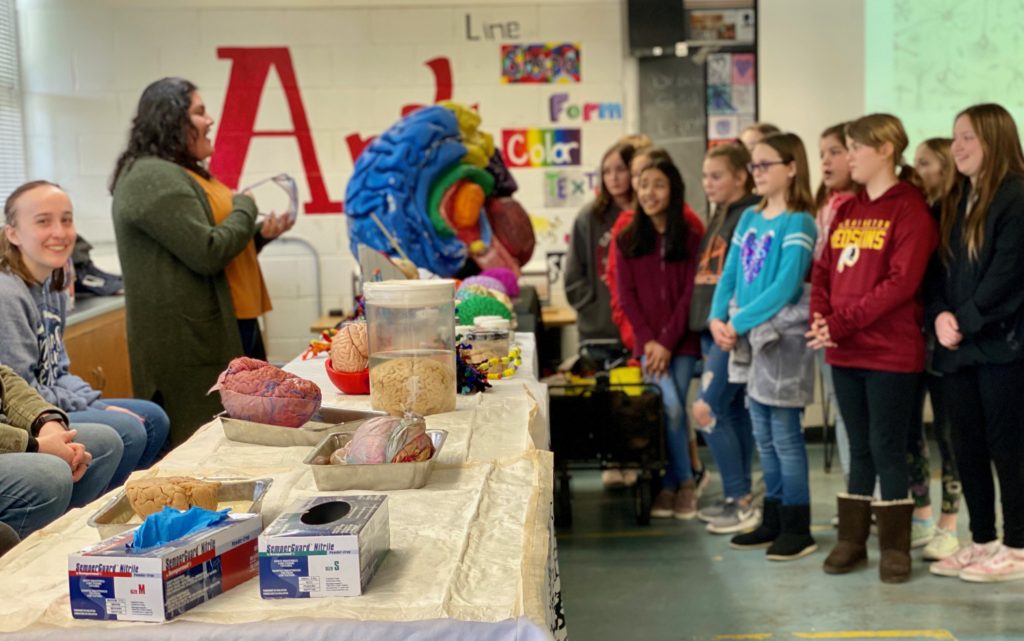
“How big is our brains? In SS we learned that Egyptians would pull the brain out through the nose when someone dies ???”
“How big is the brain?”
“what wold happin if your Frontal lobe was removed”
“the Brain take 2% of the bodys night 20% of enegy. the brain”
“When was the brain discovered”
“is a brain slimey”
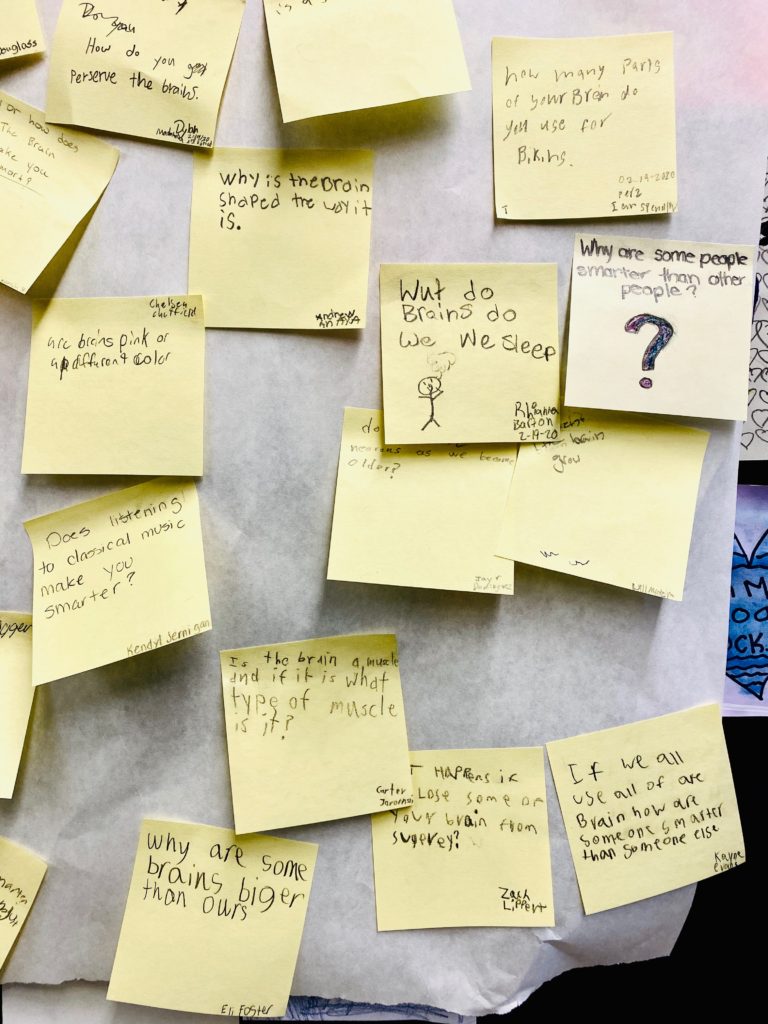
“How do animals have bigger brains than human brains”
“When did people learn that there is 2 sides of a brain?”
“Brain Question: Why is your brain so light compared to your weight?”
All of the parts
“Can a brain use all of the parts at once?”
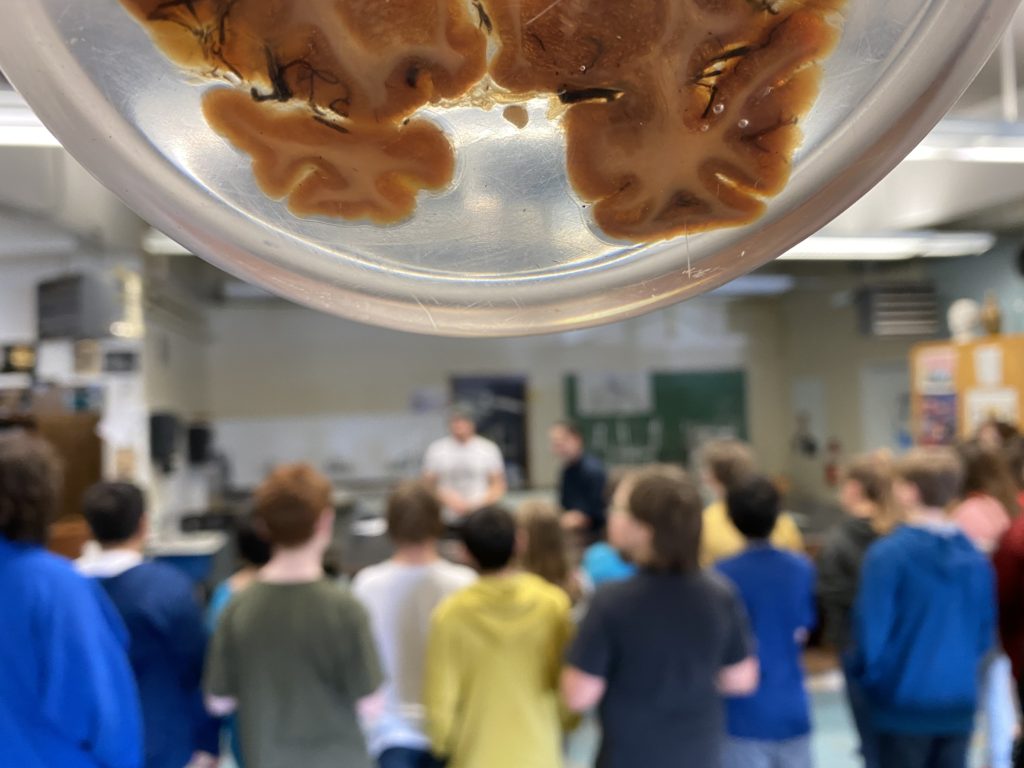
Different parts of your brain do different things, and as you mentally shift from one task, thought, perception, memory, response or decision, there are shifts in the coordinated activity of different linked networks of regions. But all the parts remain “active” to some degree – some are just preferentially coordinated and engaged at different times.
“The metabolic activity of the brain is remarkably constant over time”
― Marcus Raichle
LEARN MORE: Appraising the brain’s energy budget
From Lidia Echeverria-Garcia at Portland State: “All brain areas are alive, and I think for moments, if even that, the brain may be using all of its parts, but we have to keep in mind that the brain attempts to be as efficient as it can. It’s constantly suppressing signals that it gets from our everyday input. Such as, it may feel the softness of your shirt, but by the time you’re out of your room, you no longer notice the feel of your shirt on your skin. New experiences can feel overwhelming because your brain may actually be processing from all ‘parts’ the new perceptive and sensorial input. Though, it can quickly adjust so that the next time the same experience comes around, you’re not as overwhelmed. Also keep in mind that a lot of everyday activities become autonomic, meaning that the brain no longer has to use as many ‘parts’ or as much energy to successfully complete those tasks. If it did, each day could feel extremely daunting.”
From Angela Hendrix at NW Noggin: “When you are awake you basically never stop thinking, or perceiving sensory information, both of which use many areas of the brain. When you are asleep your brain has important work to do flushing out the cellular garbage, not to mention dreaming, processing the day, and storing memories, also affecting the whole brain. I think the real time visualization of electrical activity in the brain called “Glass brain flythrough” is an artistic way to view how busy the brain is.”
“is eveywon’s Brain the same”
“Is one side of your brain more domonate than the other side of your brain? :P”
“can surgery fix underdeveloped parts of the brain?”
“does a girl or boy have a bigger brain”
“Why is the occipital lobe in the back?”
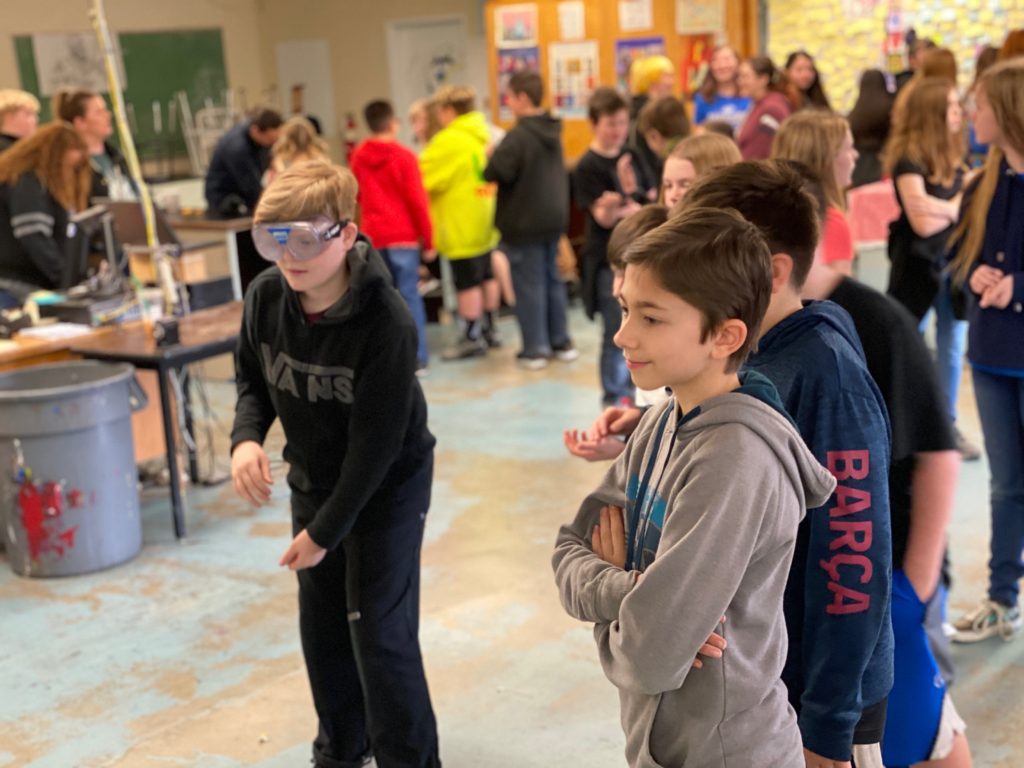
“How does our brain come up with our personality?”
“what part of the brain uses the most energy?”
“Are their exactly 10,000,000 Neurons or just about?”
“Can you tell by looking at the brain if someone is more creative or acidemic”
“chould you survive with hafe of the brain?”
“Why do people think that one side of the Brain does some any different things then the other.”
“Whose Brain divelops faster Boys or girls”
“Does a certain type of music affect the brain.”
“what matters if you lose some of your brain cells? why does your brain start shrinking At the age of 30?”
“How many memories can our brain hold?”
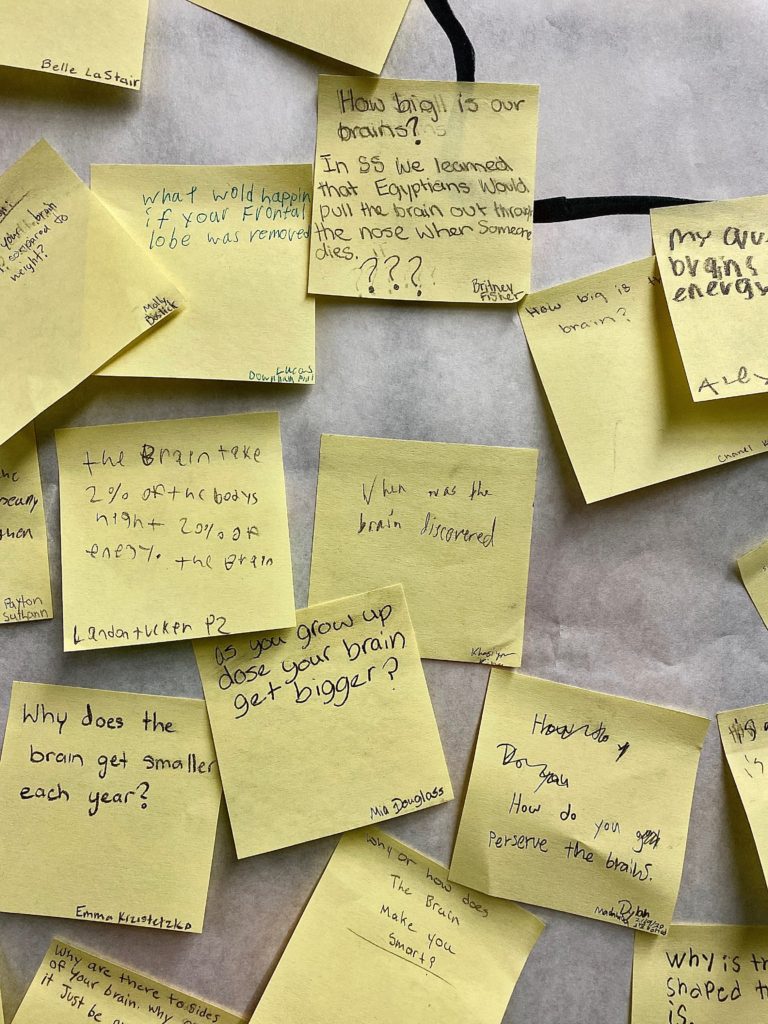
“Why are we Smarter than Animals who have bigger brains”
“How much do we use our brane every day? 10% 100% 1000%”
“Why do we dream of what we dream of.”
“How many sections are in the brain and what color is the brain? Does listening to classical music as a child make you smarter?”
“Does your brain grow as you age? How big is the average human brain?”
“Since the brain tells the body what to do, how does the brain know what to do?”
“Does a certain type of of music affect the brain.”
“How did we find out so much about the brain?”
“How does your brain grow?”
“How does water get into youre brain”
“1. dose the brain have blood in it? 2. how heavy is a normal brain?”
“How long does it take the brain to process a memory.”
“How is 77-78% of the Brain water”
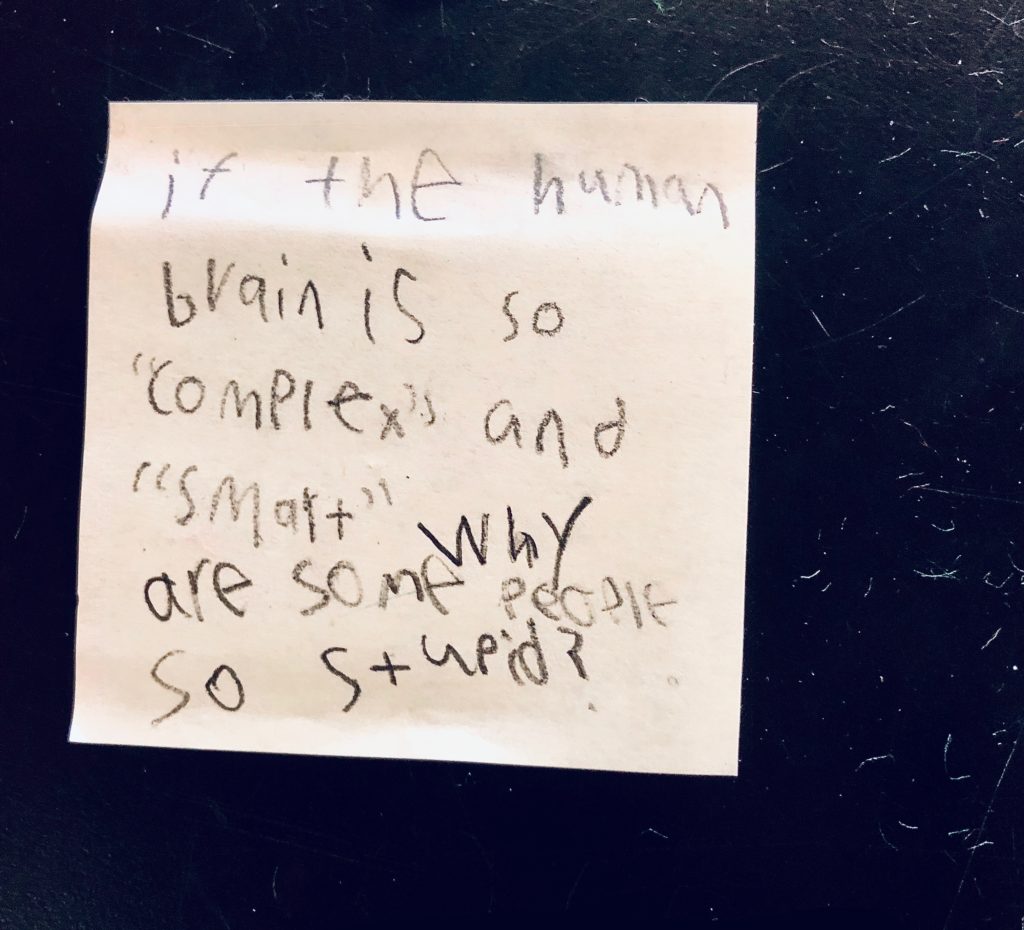
“How does the brain remember stuff so easily”
“How do alcoholics work or migrans”
“Is a mens Brain bigger than a wemens”
“how big is the average size of a humane brane”
“your brain contains billiens of nurons also hoving 20% of your body weidt”
“do you study neuroplasticity”
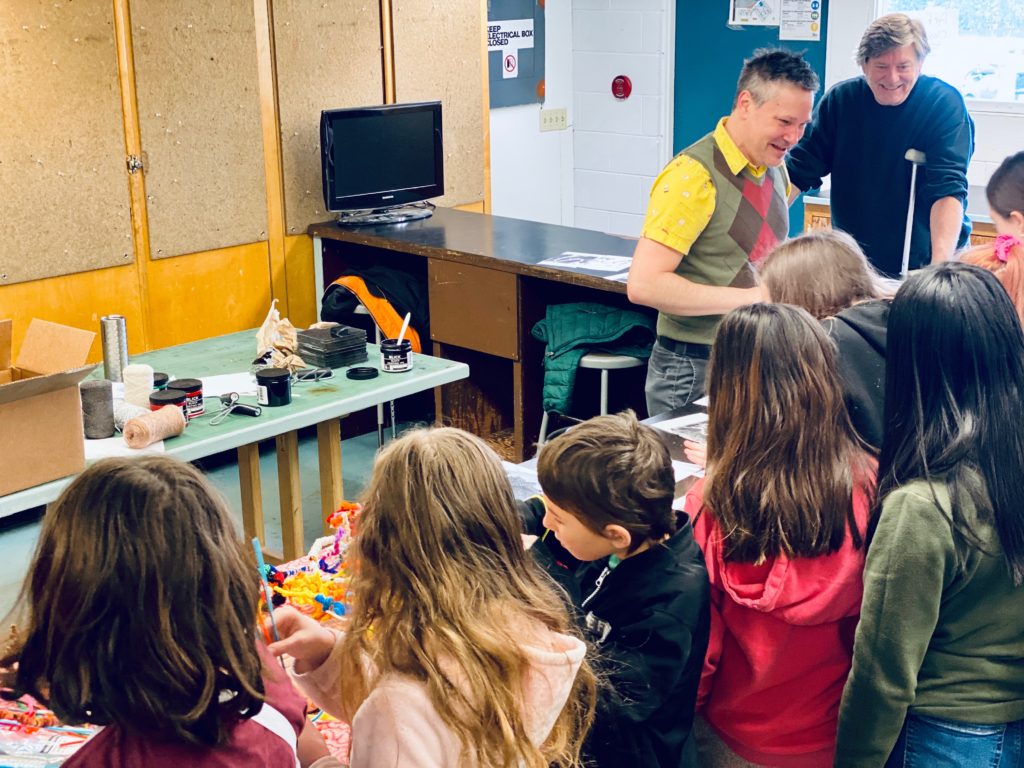
“Why Do we need the Parietal Lobe?”
“If your brain is bigger than someones does that men that you are smarter than them.”
“Why do so many People think the left side of the brain and the right side of the brain are different? Like, the left side is about smarts and literature, while the right side is about Arts and creativity.”
“How many Brain cells does the average person Have?”
“Is there such a thing as brain switching”
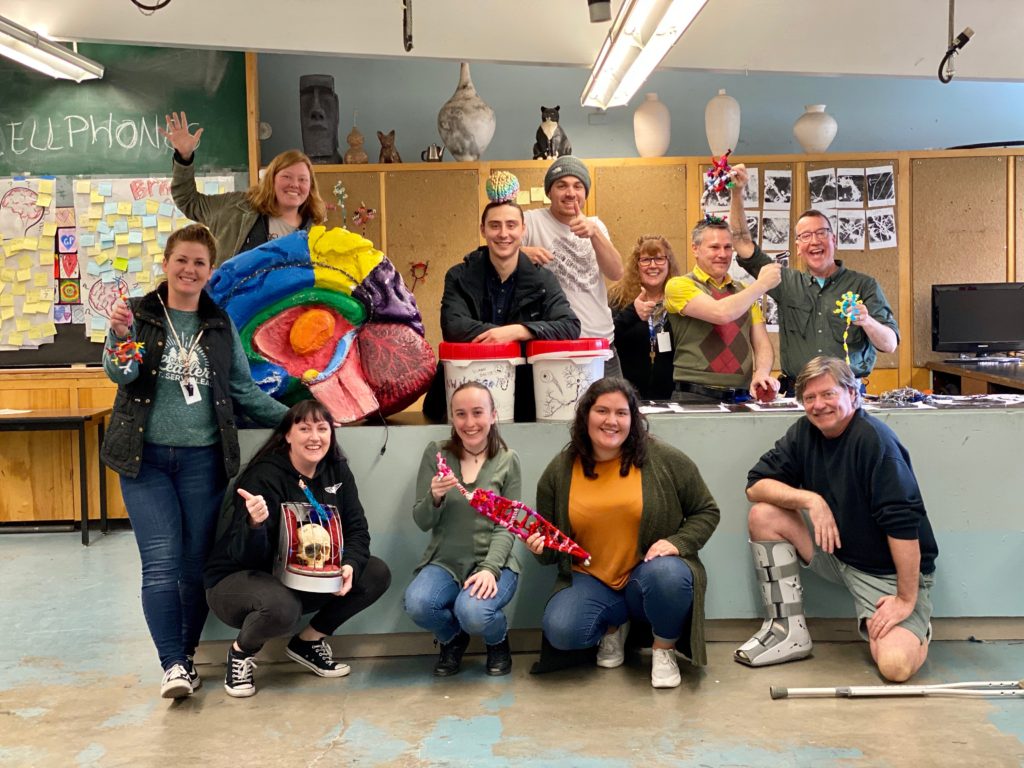








 LEARN MORE
LEARN MORE 